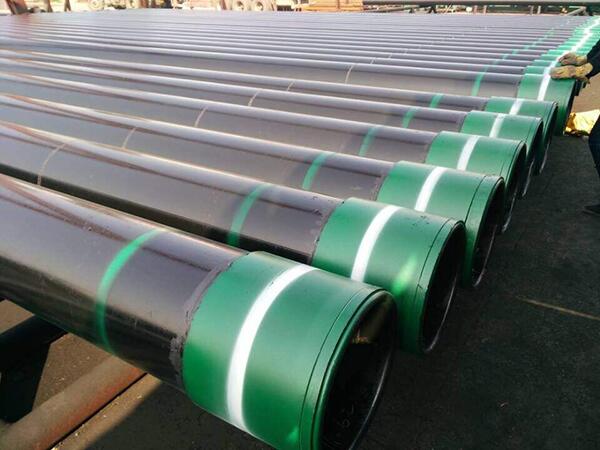
Causes of Oil Well Casing Damage
1. External factors
The so-called external factors refer to the causes of casing damage caused by oil and gas well production stimulation measures, well workovers, etc. after the oil and gas well is put into production. Most of China's oil and gas wells require fracturing or acidification and other production-increasing measures before being put into production. Fracturing and acidification are even performed after a period of production. Some wells also undergo repeated fracturing. With the continuous improvement of process technology, , the scale of transformation is also getting larger and larger, and these transformation measures will affect the service life of the casing to a great extent.
(1) Perforating operations.
Perforating is an essential task before fracturing and acidification. Improper engineering design or operation can also cause damage to the casing. For example, too much hole density reduces the strength of the casing, and perforation causes cement outside the casing. The ring is broken, resulting in casing rupture, the perforation depth is too large or the design is inaccurate, and the interlayer mudstone is mistakenly shot through, causing the mudstone water to expand, resulting in changes in ground stress, resulting in casing deformation or misalignment.

(2) Fracturing and acidification operations.
In the past decade or so, people have adopted large-scale fracturing measures for oil wells to consider the effect of transforming low-permeability oil layers. The wellhead pressure can reach 50-70MPa, and the casing pressure in the oil layer has reached 70-100MPa. The internal pressure resistance strength of commonly used N-80 casing is designed to be 64.6MPa, while the strength of J-55 casing is only 21.93~28.4MPa. In this way, casing couplings and threaded parts and well sections with poor cementing quality are prone to rupture. In addition, when oil wells are acidified, casing corrosion occurs because acid is not discharged in time. Some wells are acidified multiple times, which accelerates the corrosion rate of the casing, causing casing perforation and leakage.
(3) Oil well transfer and downhole tools.
When oil wells reach a later stage of production, some oil wells will be converted into water injection wells. The original oil well cement return height is only about 200m above the oil layer, while the normal water injection well cement return height requirement is to the wellhead. The transfer well is relatively different from the normal water injection well. The height of the cement return is not high enough. The upper casing is not protected by the cement ring and is completely immersed in the shallow water above. On the one hand, there is serious corrosion outside the pipe. On the other hand, the upper casing is subjected to water injection pressure after injection, which promotes each other with the corrosion outside the pipe, aggravating the damage to the casing. In addition, the collision damage of downhole tools to the inner wall of the casing will also aggravate the corrosion, especially when there is a packer downhole, the packer will cause extremely serious damage to the inner wall of the casing. First of all, the strong stress expansion when the packer is seated will cause huge stress damage to the inner wall of the casing; secondly, due to the obstruction of the packer, dirt easily accumulates near the packer, causing corrosion under the scale, and stress damage synergizes with scale. Under the action of stress, the casing loss rate near the packer will increase significantly. When the packer fails and is unsealed, it will cause serious damage to the sealing position. A large amount of practice has proved that the damage to the casing when the packer is unsealed is extremely serious.
2. Internal factors
In-pipe corrosion mainly refers to the corrosion of casing by fluid entering the oil casing annulus. It mainly occurs in production wells because crude oil or natural gas contains some corrosive gases such as sulfur, carbon dioxide, chloride ions, and hydrogen sulfide. When these gases enter the oil After the casing annulus is empty and mixed with water, it will cause varying degrees of corrosion to the casing. Water injection wells will also contain some corrosive substances, mainly bacteria. But compared to production wells, the incoming fluid in the injection well can be processed through the surface to avoid corrosion of the pipe string to the greatest extent.
(2) Corrosion outside the pipe.
External corrosion mainly occurs when the cement sheath is damaged or there is no cement sheath in the upper part of the oil well. The casing is in direct contact with the formation water. Corrosive gases such as carbon dioxide, chloride ions and hydrogen sulfide in the formation water cause certain corrosion to the casing. When there is When corrosion products or scale exist, and any medium such as O2, H2S, CI- and CO2 is contained, galvanic cell corrosion can be formed under scale. Taking oxygen corrosion as an example, the surface of the corrosion product easily adsorbs many oxygen atoms, and the difference in oxygen concentration promotes cathode depolarization of the metal surface and accelerates corrosion of the metal surface.


